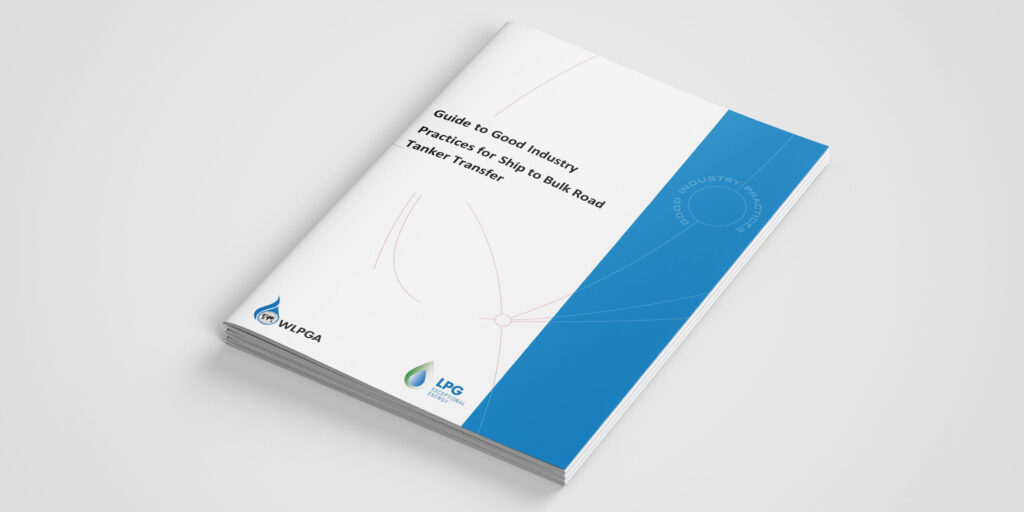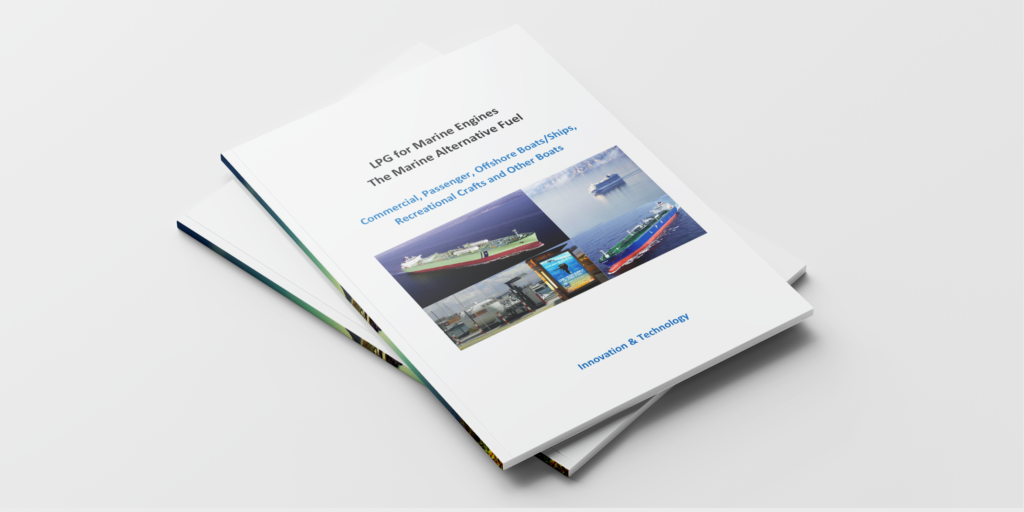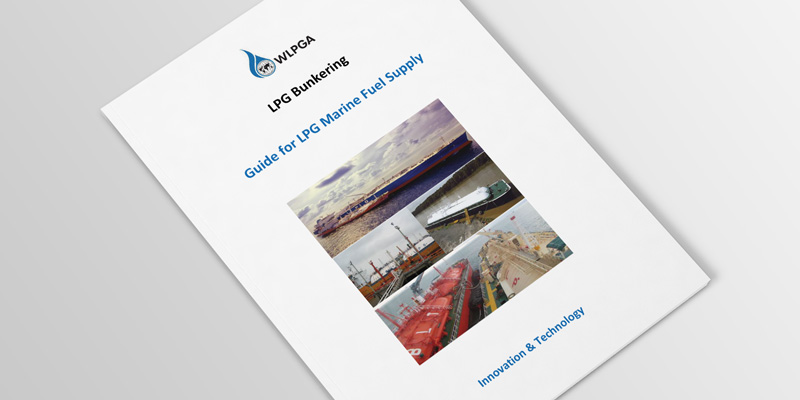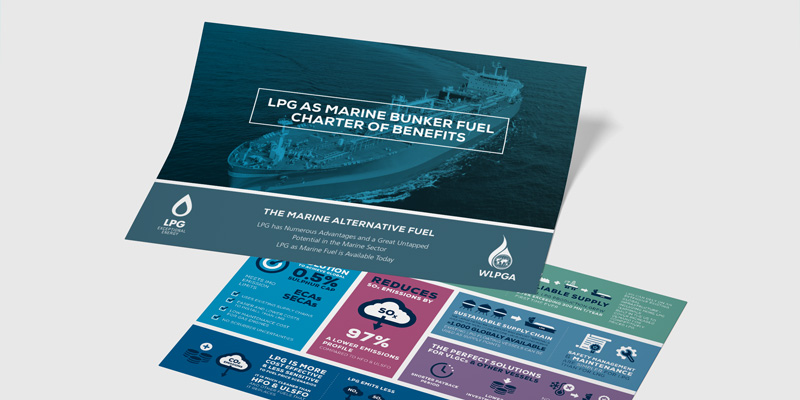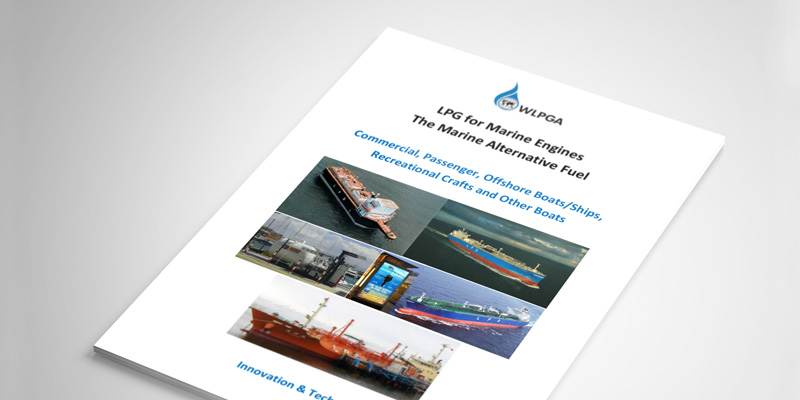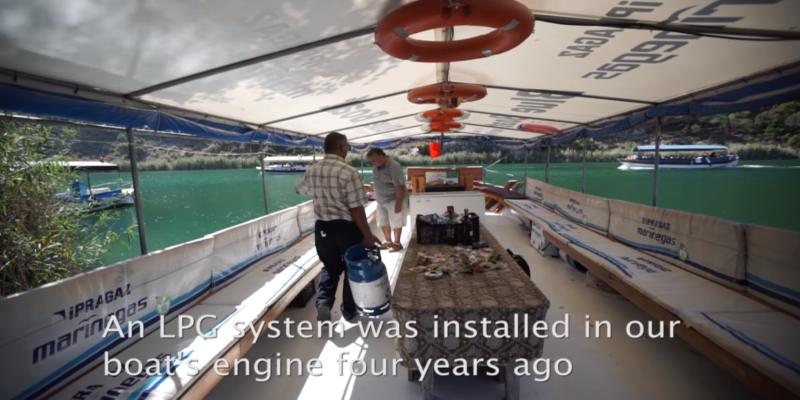%
Historically, oil-based fuels have met over 99% of the total energy demand for international shipping.
Without major interventions, emissions are expected to double by 2050.
%
%
Deep-sea shipping accounts for 85% of greenhouse gas emissions from the maritime industry.
%
Ships generate approximately 5-10% of all Sulphur Dioxide anthropogenic emissions at a global level.
The role of Liquid Gas
With a well-developed infrastructure and proven technology, Liquid Gas, including LPG, provides a convenient solution to expedite the energy transition in the maritime industry. It presents a viable alternative energy source to traditional fuels such as heavy fuel oil, marine diesel fuel and marine gas oil.
Lower CO2 emissions
Compared to heavy fuel oil, Liquid Gas combustion emits fewer CO2 emissions per unit of energy produced. Although not a zero-emission fuel, LPG has a lower carbon footprint, making it a transitional option towards more sustainable energy sources.
Reduced air pollutants
Liquid Gas produces significantly lower levels of SOx and NOx compared to conventional maritime fuels. This would lead to improvements in air quality and reduced acid rain formation.
A step towards ammonia-powered ships
LPG engines have the potential to be adapted to use green ammonia as a fuel or as a carbon-free combustion promoter, which would eliminate CO2 emissions entirely and significantly reduce other emissions.
Compliance with regulations
As international regulations such as the International Maritime Organization’s (IMO) sulphur cap and stricter emissions standards come into play, Liquid Gas could provide a compliant alternative without the need for exhaust gas cleaning systems (“scrubbers”).
Existing infrastructure
With more than 600 existing storage facilities and terminals, LPG infrastructure is well-developed globally.
No risk of spillage
Liquid Gas is non-toxic.
Currently, LPG is already a preferred marine fuel solution for LPG carriers.
Liquid Gas and
the energy transition
Liquid Gas can play a key role in reducing emissions from global shipping
- Compared to heavy fuel oils, LPG emits approximately 97% less SOx, 20% less NOx and 90% less PM while cutting carbon emissions by roughly 20%. Therefore, LPG is compliant with existing emission standards including the IMO’s sulphur cap of 0.5% and requirements regarding operating in emission control areas (ECA).
- Liquid fuels also have economic advantages that allow for a cost-competitive transition to lower-carbon fuels. Studies based on data from over 70,000 ships in South Korea show that LPG in ships could reduce annual fuel costs by up to 25.9%.
- LPG is also easier to handle than LNG, as cryogenic materials are not required for the fuel tanks. This also results in lower investment costs for such a system.
- Liquid fuels are a viable alternative gaseous fuel for all sizes and types of boats and ships.
- With more than 600 existing storage facilities and terminals, the LPG infrastructure is well-developed globally. This implies that LPG can be effectively supplied using existing facilities while new terminals can be built faster and at lower cost.
- LPG-powered propulsion installations could be made ammonia-ready with a relatively small investment, making LPG vessels compatible with ammonia pathways. LPG can therefore act as a bridging energy until the ammonia technology is ready for commercialisation.


